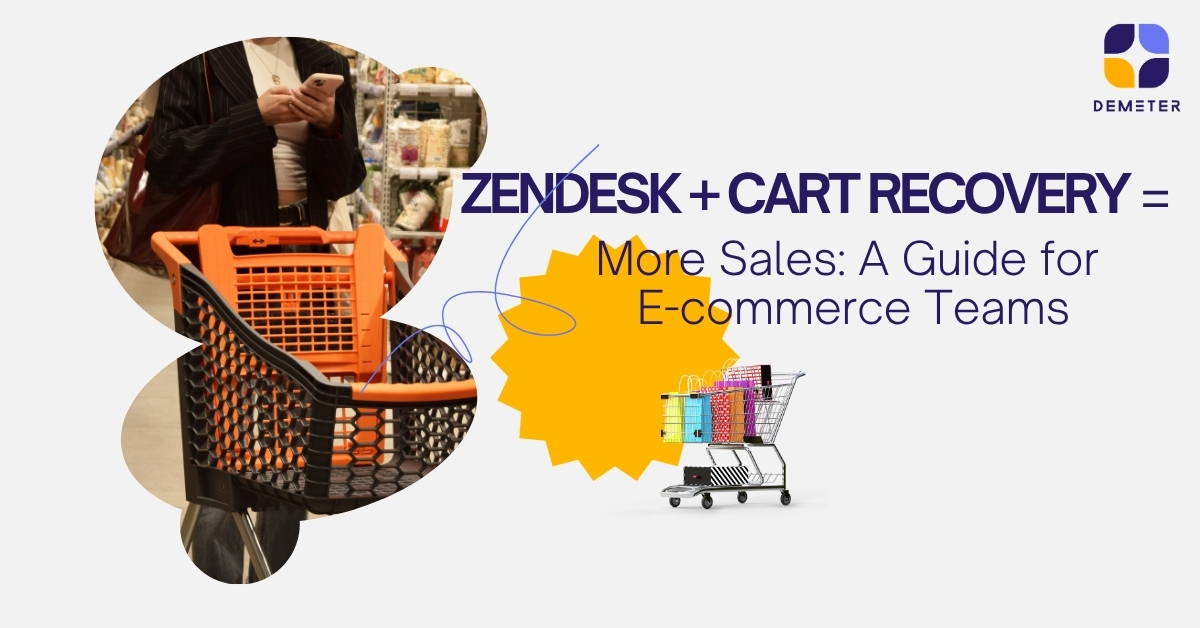If you run an online store, you’ve probably felt that sting—when a customer adds something to their cart, seems ready to buy… and then disappears. It’s one of the most common frustrations in e-commerce. In fact, nearly 70% of all online shopping carts are left behind, according to research from the Baymard Institute.
But here’s the thing: an abandoned cart doesn’t have to be a lost sale. In many cases, it’s actually a chance to re-engage, start a conversation, and turn that hesitation into a purchase. That’s where Zendesk comes in. It gives online businesses the tools to reach out, offer support, and bring those potential customers back—with a better experience than before.
Let’s take a closer look at why customers walk away from their carts in the first place, and how Zendesk helps businesses turn that into an opportunity.
Why People Walk Away from Their Shopping Carts
We’ve all done it: browsed an online store, found something we liked, maybe even added it to the cart… but didn’t complete the purchase. So what causes this drop-off?
Here are a few of the most common reasons:
- 1. Unexpected Costs at Checkout
Ever added a $40 item to your cart only to be hit with $15 in shipping and taxes? It’s a quick way to make someone reconsider. In fact, studies show almost half of online shoppers abandon their carts because of unexpected extra costs.
- 2. Complicated or Frustrating Checkout Process
Nobody likes filling out long forms or jumping through unnecessary hoops. If the checkout feels clunky or slow, customers are more likely to give up before clicking “Place Order.”
- 3. Trust Issues or Limited Payment Options
When a site doesn’t feel secure—or doesn’t accept the customer’s preferred payment method—it can be a dealbreaker.
- 4. Unanswered Questions
Shoppers might want to know about return policies, shipping timelines, or product specs before they commit. If they can’t find the answers easily, they’re more likely to abandon.
- 5. Technical Glitches or Bugs
A slow-loading page or an error at checkout? That’s often all it takes to lose a sale.
Here’s the silver lining: most of these problems can be solved with timely support and smart communication—and that’s exactly what Zendesk is built to do.
How Zendesk Helps You Recover Those Lost Sales
What makes Zendesk such a powerful tool in e-commerce is its ability to step in right when it matters—before the sale is lost for good. Here’s how it works in real-life situations:

Zendesk’s live messaging features let you be there when shoppers need help most. For example, if someone is hesitating at checkout, a friendly chat prompt could pop up saying:
“Hey there! Have questions about shipping? We’re here to help.”
It’s like having a helpful store associate standing nearby—ready to answer questions or ease concerns before the customer walks away.
And thanks to AI-powered chatbots, Zendesk can also handle quick answers about things like return policies, product availability, or delivery estimates—all without a human needing to step in right away.
If someone still leaves without checking out, Zendesk lets you automate follow-up messages—but in a way that feels personal.
You can send an email reminding them what they left behind, maybe offer a small discount, or invite them to chat if they need help finishing their purchase. And with integrations like Shopify, Klaviyo, and Mailchimp, setting this up is simple.
One timely message might be all it takes to bring them back.
Not every shopper is equal. Some are just browsing, while others are this close to buying. Zendesk uses AI to pick up on those signals—like repeated visits or big-ticket items in the cart—and can flag those customers for personal outreach.
That means your team can prioritize the leads most likely to convert, making the most of your time and effort.
Today’s shoppers might start their journey on your website but switch to Instagram or WhatsApp before they make a decision. Zendesk connects all those channels, so your support team can continue the conversation wherever the customer is.
Even better—Zendesk makes it possible to keep the full context of the conversation across platforms. No more asking the customer to “start over.”
Zendesk Explore gives you detailed insights into where and why cart abandonment is happening. You can see:
- Which steps in the process lose the most customers
- What questions are being asked most often
- Which products are left behind the most
With this kind of data, you can fine-tune your checkout process, FAQ content, and even product pages to reduce abandonment over time.
Turning a “No” into a “Not Yet”
Cart abandonment will always be a part of e-commerce—but it doesn’t have to be a dead end. With Zendesk, you can turn what seems like a loss into a conversation starter, and better yet—a second chance to connect, support, and convert.
By combining real-time messaging, automation, AI, omnichannel support, and analytics, Zendesk helps e-commerce teams become more than just problem-solvers—they become partners in the customer journey.
If your business is ready to stop missing out on sales and start building smarter, more human connections with your customers, it’s time to consider Zendesk as your CX engine.

About the Author
Mr. Carl Aldrich Wang is an International Marketing Specialist at DEMETER ICT, a Premier Partner of Google and Zendesk in the APAC region. DEMETER ICT serves over 4,600 business customers across APAC, including Greater China, with the largest customer base for Google and Zendesk services in the region. His expertise is in customer experience and global digital strategy with work that emphasizes aligning business goals with customer needs, enabling organizations to strengthen engagement, streamline workflows, and drive measurable growth.





